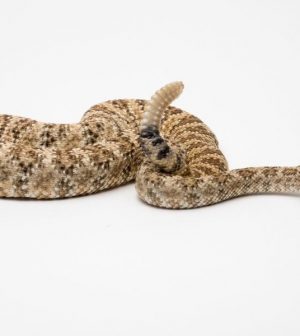- Understanding the Connection Between Anxiety and Depression
- How Daily Prunes Can Influence Cholesterol and Inflammation
- When to Take B12 for Better Absorption and Energy
- Epsom Salts: Health Benefits and Uses
- See What Saffron Can Do for Sleep and Heart Health
- 6 Common Mistakes to Avoid Before Your Physical
- Can Sweating Really Help You Beat a Cold?
- Strengthening Your Relationship: Practical Strategies
- Skip Storing This Everyday Product in the Fridge Door
- Green Tea + B3 Pairing May Boost Brain Health
More Rattlesnake Bites After Rainy Spells

The threat of rattlesnake bites in California decreases during droughts and increases after rainy weather, a new study finds.
Rainy spells result in more shrub growth and, with that, more rodents, the snakes’ primary food source, said study author Dr. Grant Lipman, an emergency medicine physician at Stanford Medicine, and colleagues.
“More food, more snakes, more snakebites,” Lipman said in a university news release. “But that’s just our theory.”
He and his colleagues analyzed more than 5,300 snakebites, including five deaths, reported to the California Poison Control Center between 1997 and 2017.
All of the snakebites were from rattlesnakes. Most occurred at home in the backyard, and the majority were during the spring or summer and in counties dominated by shrub or scrub growth.
Snakebites fell 10 percent after a drought, but rose 10 percent following high levels of rain, the researchers found.
Among the other findings: Half the patients were older than 37, and most were male.
Also, Mariposa County, home of Yosemite National Park, had the highest rate of snakebites — 96 per 1 million people. Heavily populated Santa Clara County had just 4 per 1 million people.
“The most common comment I usually hear from snakebite victims in the emergency room is: ‘I was just minding my own business,’ ” Lipman said. “Usually, though, it’s the snakes that were minding their own business, having a nice nap. It’s people who tend to disturb them.”
With an anticipated rise in weather extremes caused by climate change, Lipman said the possibility of more snakebites shouldn’t be overlooked.
This research could help in public health efforts to deal with snakebites, such as how best to distribute anti-venom supplies, he and his colleagues noted.
“We can predict a big snakebite season because of prior wet winters and have anti-venom in places where there are a lot of hikers or trail runners,” Lipman said. “It’s important information for people who work and play in California.”
The study was published Sept. 5 in the journal Clinical Toxicology.
More information
The U.S. Centers for Disease Control and Prevention has more on snakebites.
Source: HealthDay
Copyright © 2026 HealthDay. All rights reserved.










